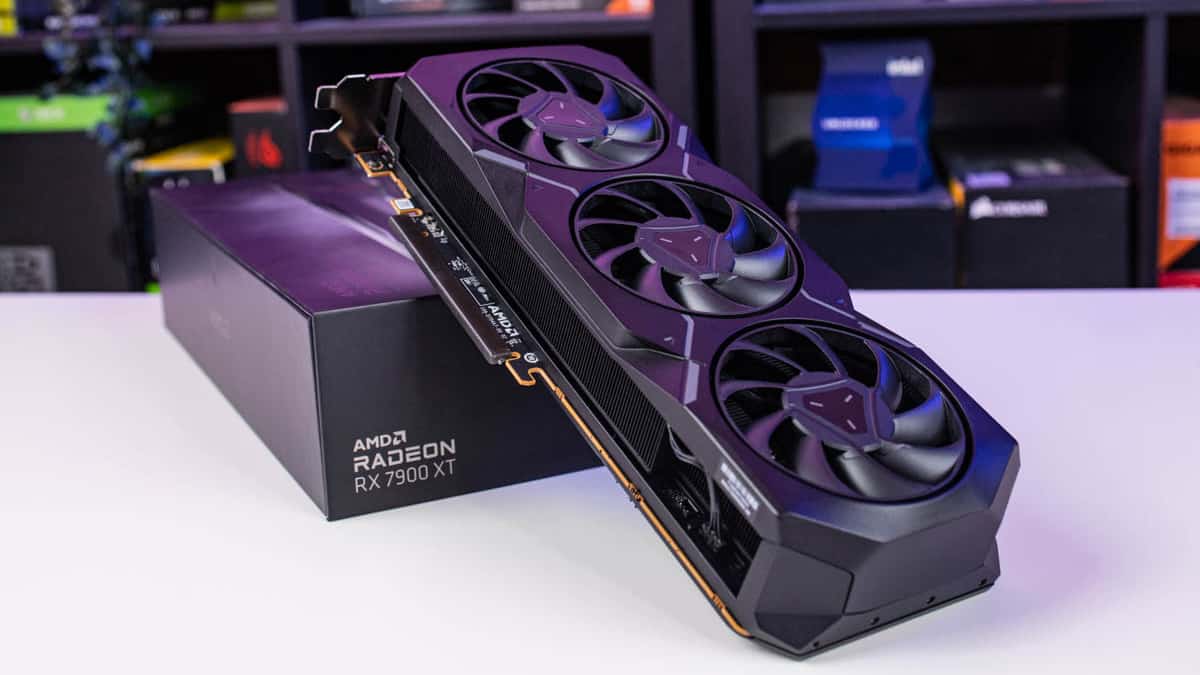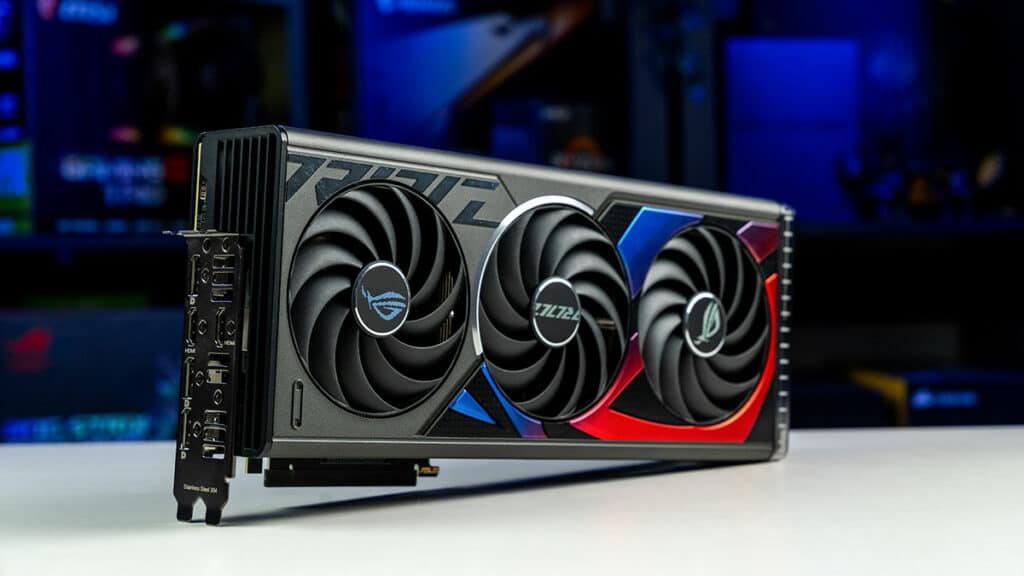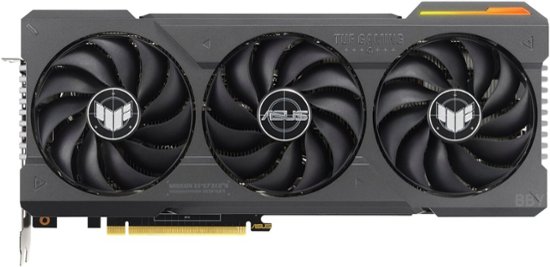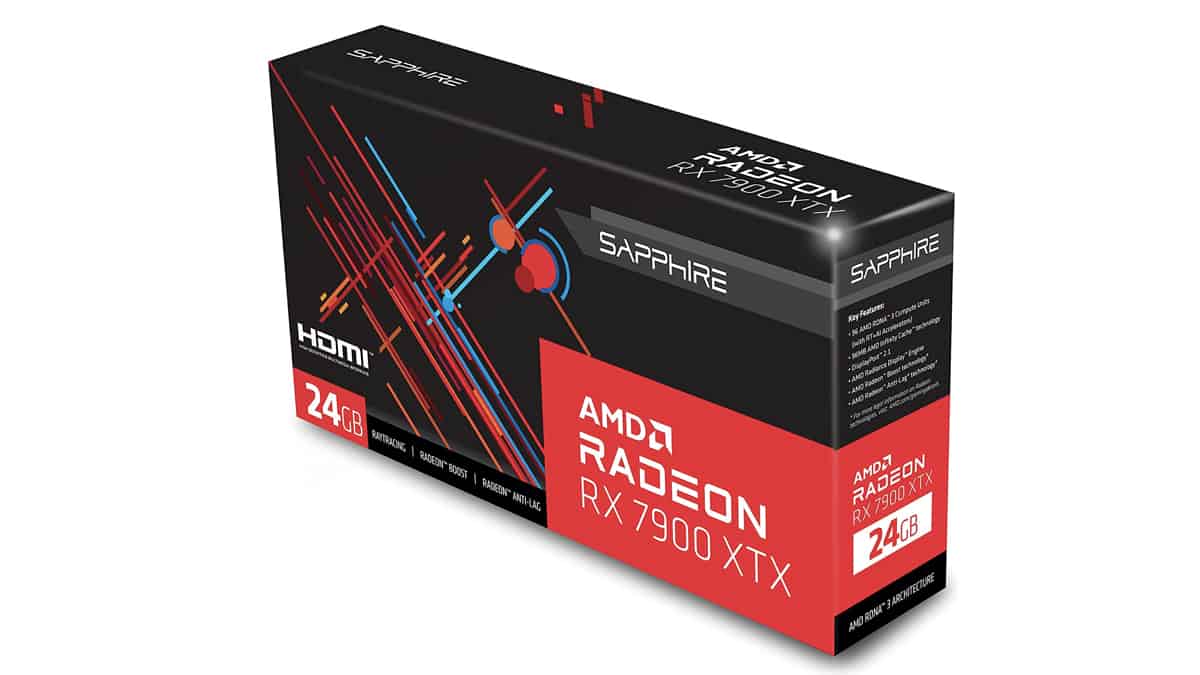Nvidia RTX 4070 Ti Super vs AMD RX 7900 XT – AMD wins?

Table of Contents
Are you looking to upgrade your GPU? The Nvidia GeForce RTX 4070 Ti Super and the RX 7900 XT from AMD are two high-tier GPUs. Both graphics cards promise unparalleled performance, cutting-edge features, and a visual feast for gaming enthusiasts. In this head-to-head comparison, we’ll delve into these powerhouses’ specifications, performance, and pricing to determine the winner of the RTX 4070 Ti Super vs RX 7900 XT.
RTX 4070 Ti Super vs RX 7900 XT – Specs comparison
Nvidia’s RTX 4070 Ti Super is fabricated using the advanced 5 nm manufacturing process and powered by the AD103 graphics processor. It boasts support for DirectX 12 Ultimate. This ensures compatibility with a wide range of modern games. The AD103 graphics processor is a substantial chip, boasting a die area of 379 mm² and a formidable 45,900 million transistors. Distinct from the fully unlocked GeForce RTX 4080 SUPER, the RTX 4070 Ti Super has strategically disabled some shading units, resulting in 8448 shading units, 264 texture mapping units, and 96 ROPs. Further enhancing its capabilities, the GPU includes 264 tensor cores designed to accelerate machine learning applications and 66 raytracing acceleration cores.
Prime Day may have closed its doors, but that hasn't stopped great deals from landing on the web's biggest online retailer. Here are all the best last chance savings from this year's Prime event.
- Sapphire Pulse AMD Radeon™ RX 9070 XT Was $779 Now $719
- AMD Ryzen 7 7800X3D Processor Was $449 Now $341
- Skytech King 95 Ryzen 7 9800X3D gaming PC Was $2,899 Now $2,599
- LG 77-Inch Class OLED C5 TV Was $3,696 Now $2,996
- AOC Laptop Computer 16GB RAM 512GB SSD Was $360.99 Now $306.84
- Lexar 2TB NM1090 w/HeatSink SSD Was $281.97 Now $214.98
- Apple Watch Series 10 GPS+ Smartwatch Was $499.99 Now $379.99
- AMD Ryzen 9 5950X processor Was $3199.99 Now $279.99
- Garmin vívoactive 5 Smartwatch Was $299.99 Now $190
*Prices and savings subject to change. Click through to get the current prices.
| Specs | Nvidia RTX 4070 Ti Super | AMD Radeon RX 7900 XT |
|---|---|---|
| Architecture | Ada Lovelace | RDNA 3.0 |
| Processor Size | 5 nm | 5 nm |
| Transistors | 45,900 million | 57,700 million |
| Base Clock | 2340 MHz | 1500 MHz |
| Boost Clock | 2610 MHz | 2394 MHz |
| Memory Clock | 1313 MHz21 Gbps effective | 2500 MHz20 Gbps effective |
| VRAM / Memory | 16 GB / GDDR6X | 20 GB / GDDR6 |
| Memory Bus | 256 bit | 320 bit |
| Bandwidth | 672.3 GB/s | 800.0 GB/s |
| TDP | 285 W | 300 W |
| Shading Units | 8448 | 5376 |
| RT Cores | 66 | 84 |
| Tensor Count | 264 | 336 |
| L1 Cache | 128 KB (per SM) | 256 KB per Array |
| L2 Cache | 48 MB | 6 MB |
| L3 Cache | N/A | 80 MB |
| Price / MSRP | $799 | $899 |
The 4070-Ti is more power efficient and has a broader feature set through a DLSS 3.0. Accompanied by 16 GB of GDDR6X memory connected via a 256-bit memory interface, the GPU operates at a base frequency of 2340 MHz, with the potential for a boost up to 2610 MHz. The memory operates at 1313 MHz, providing an effective data rate of 21 Gbps. This configuration ensures efficient handling of graphics-intensive tasks and demanding applications.
The Navi 31 GPU, boasting a substantial die area of 529 mm² and an impressive 57,700 million transistors, is the powerhouse behind the Radeon RX 7900 XT. In contrast to the fully unleashed Radeon RX 7900 XTX, this model strategically disables some shading units, resulting in 5376 shading units, 336 texture mapping units, and 192 ROPs. Complementing these features are 84 raytracing acceleration cores.
For memory, AMD pairs the Radeon RX 7900 XT with 20 GB of GDDR6 memory utilizing a 320-bit memory interface. Operating at a base frequency of 1500 MHz, the GPU can dynamically boost up to 2394 MHz while the memory clocks in at 2500 MHz (20 Gbps effective), ensuring swift and efficient data handling. Powering the Radeon RX 7900 XT involves 2x 8-pin power connectors, with a maximum power draw rated at 300 W. Display connectivity options include 1x HDMI 2.1a, 2x DisplayPort 2.1, and 1x USB Type-C, catering to diverse display setups. The card seamlessly integrates with the system through a PCI-Express 4.0 x16 interface, showcasing its high-speed data transfer capabilities. For a more in-depth breakdown of this card’s capabilities, be sure to check out our full AMD RX 7900 XT review.

RTX 4070 Ti Super vs RX 7900 XT – Performance and benchmarks
So, which card has the better performance? When it comes to performance benchmarks, these specifications translate into intriguing real-world scenarios. Following our review of the RTX 4070 Ti Super, we found its higher clock speeds and abundant shading units excel in tasks that demand swift rendering and high FPS. PC games optimized for Nvidia architectures could see a performance boost, especially in scenarios where the GPU needs to deliver rapid, complex calculations.
On the other hand, the RX 7900 XT’s larger memory size and wider memory bus make it a compelling choice for gaming at higher resolutions and with demanding graphical settings. In scenarios where the GPU needs to handle large textures and expansive game worlds, the RX 7900 XT’s memory advantage could shine while delivering the best graphics.
AI-enhanced applications might favor the RTX 4070 Ti Super due to its higher shading units and better clock speeds. Tasks like real-time ray tracing, deep learning, and AI-powered features in gaming could benefit from Nvidia’s Tensor Core technology. However, the RX 7900 XT is no less with its better memory clock, memory size, and bandwidth. Moreover, it also features an impressive 80 MB L3 cache. Thus, thanks to its AMD 3D V-cache technology support, it can overshadow the RTX 4070 Ti Super in some games.
| Game | RTX 4070 Ti Super | AMD RX 7900 XT |
|---|---|---|
| Cyberpunk 2077 | 44 FPS | 62 FPS |
| Rainbow Six Siege | 160 FPS | 153 FPS |
RTX 4070 Ti Super vs RX 7900 XT – Price
Having discussed real-world performance, let’s dive into price comparison. When writing, the RTX 4070 Ti Super has a price tag of $799, while AMD’s RX 7900 XT commands a slightly higher $899. Considering the RTX 4070 Ti Super’s higher shading units and competitive specifications, its lower price margin positions it as a potentially more attractive option for gamers seeking a balance between performance and cost.
Be informed
Only you will know what GPU best suits your needs. Be thorough when checking spec tables in order to fully grasp the product you are purchasing.
Is the RTX 4070 Ti Super good enough for 4K?
In short, yes. Gamers seeking ultra-smooth performance will be impressed. This hardware of the RTX 4070 Ti Super boasts the power to deliver smooth gameplay at over 60 FPS in AAA titles, all at a stunning native 4K resolution. You can crank the graphical settings up high and still experience exceptional performance, although the extreme settings might cause a slight dip in image quality.
Final verdict
The battle between these GPUs is tough, as both have significant advantages over one another. Hence, deciding which one to buy should ultimately depend on your requirements. For those prioritizing raw gaming performance, higher frame rates, and AI capabilities, the RTX 4070 Ti Super is a compelling choice. However, if superior memory capacity and bandwidth are paramount, the RX 7900 XT proves to be a worthy contender.



